Introduction to the Mega328
The Mega328 is similar in a lot of ways to the MK-328 meter. Both of these meters are very impressive in the capability. I purchased the Mega328 from Ebay at a price of under $10! The meter I purchased does not have a case with it, but the cases are readily available. Like the MK-328, the Mega328 has an ATMega 328 processor. The Mega328 processor is surface mounted, whereas the MK-328 is the through-hole design. This meter will test equilvalent series resistance (ESR), capacitance, inductance, transistors, etc. I’ts a great tool for electronics enthusiasts!
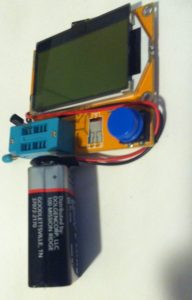
LED Test
I performed the same test on this meter as I did for the MK-328. This meter, however, seems to be a little bit easier to read. The first test was the LED test. The left-most slots of the ZIF (Zero Insertion Force) socket are pins 1, 2, and 3 respectively. I placed the LED across pins 1 and 2. Then, I pressed the blue button to run the test.
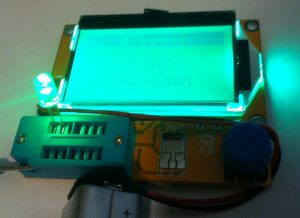
The LED flashed a few times as the test was being performed, then displayed the following results:
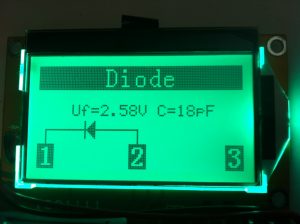
The meter correctly identified the device as a Diode. An LED is a Light Emitting Diode. The cathode is connected to Pin #1. The meter also displays the forward voltage of the LED as 2.58 volts. The LED also has an inherent capacitance of 18 Pico-Farads. Since the LED only has 2 leads, nothing is connected to pin #3.
Capacitor Test
The capacitance test is one of the most useful features of this meter when troubleshooting a circuit. Over time, capacitors tend to deplete, deform, or leak. Capacitors are a common failure in older circuits. I ran this test with a 10 Mico-Farad capacitor, and the results are as shown.
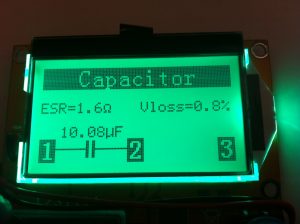
As you can see this capacitor is testing very close to it’s rated value. We are showing 10 Micro-Farads. The voltage loss of the capacitor is .8%. ESR is the Equivalent Series Resistance. This capacitor has an ESR of 1.6 Ohms.
Transistor Test
I find this test to be very useful also. I’m always skeptical about fake transistors and MOSFETS on ebay. This test allows us to check the hFe rating (gain) of the transistor. This is not a guarantee that the component is not a fake, but it does tell us if the gain is in the right ball park. The test will also tell us if the transistor is good, or bad.
I placed the transistor in the ZIF socket as shown:

Then I pressed the blue test button.
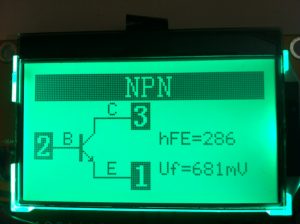
The meter shows the Pinout of the transistor. Pin 1 is the emitter, 2 is the base, and 3 is the collector. The gain is 286. The gain is not set in stone, and can vary from transistor to transistor. When using transistors in parallel, you want the gains to be pretty close. If we had a box of transistors this test would allow us to find the closest matching pair.
— Ricky Bryce

Pingback: Usage of Transistors, examples, applications, and a sample circuit.